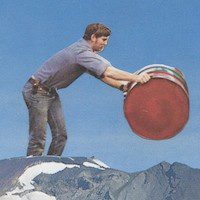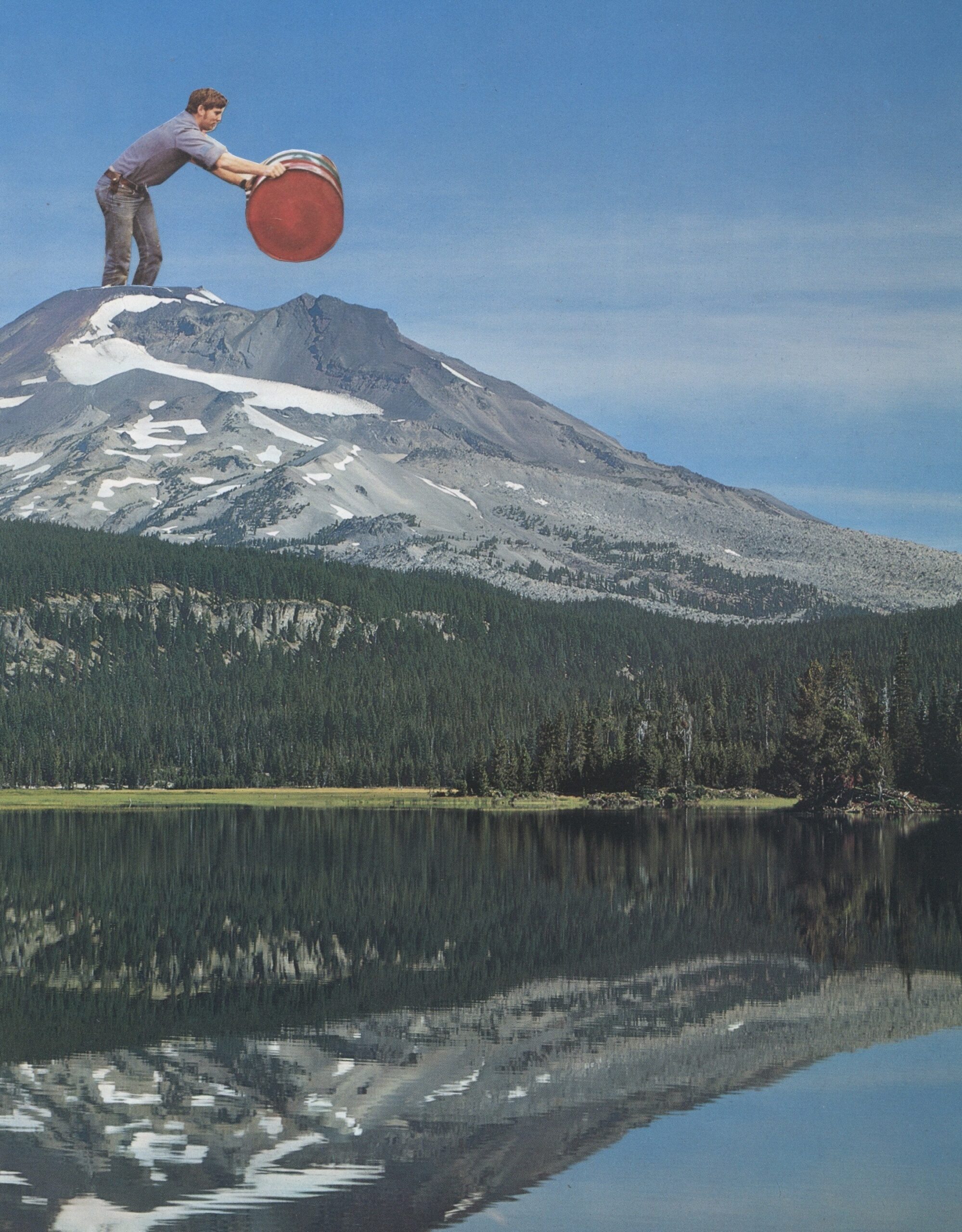Click image to enlarge:
***
Notes on this collage:
- The mountain is taken from a photo book on the Sierra Mountains in Nevada. I can’t remember where the guy is from. Probably National Geographic. I recently started doing this trick where I cut a line with an X-acto knife if I want it to look like someone or something is coming out of something else, or just standing behind an object. You may be able to detect this cut on top of the mountain.
- When I look at this collage, I think two things. In one way, I think it’s a pretty simple and funny sight gag, like something you have to let sink in for a few seconds before laughing (hopefully). In another way, I think I may eventually add something else, like some at the bottom of the hill walking up, or perhaps crouched down with a catcher’s mitt, or—if I wanted to make it political—some tiny animals.
- I find that slapstick violence can be pretty funny in collage art. Like visual satire.
- Soundtrack for making this collage was Cansei de Ser Sexy (CSS).
- I recently discovered a cool zine at Reading Frenzy in Portland called Eyeball Burp. The newest issue is titled Clip or Copy: A Survey of Collage Art. It includes some great digital and handmade work by folks like Albane Simon, Kevin Cheah, and editors Alex Chiu and A’misa Chiu. It’s a crazy and impressive publication.
- My collage spotlight this time around shines on Mr. Cory Peeke. He was the first collage artist I met in person earlier this year after I became obsessed with collaging. He lives in La Grande, Oregon, on the other side of the state from Portland, and I count him as an early influence on my love of collage. He says living in a small town has caused him to “make a lot more stuff than I did when I lived in San Francisco or Seattle. This is primarily because there are fewer distractions for me here.” A collage artist for more than twenty years, Cory’s work feels vintage, minimal, and spooky. A certain sense of loneliness pervades his pieces, which sometimes contain discarded papers and photos found on the street or in shops. Cory was recently featured in Creative Quarterly’s 100 Best 2013. His work has transformed over the last couple years since he began working with transparency. He says, “I find a lot of images via the Internet that I print out on transparency film. It’s added another layer to the works, but there is no real substitute for the actual image/item. I think real ephemera carries with it a sense of its past and that tangible history adds real presence to the final work.”





